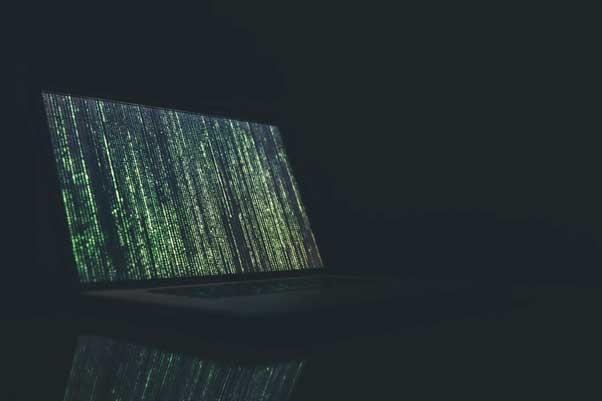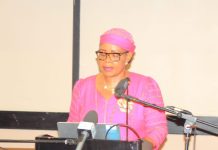By
Partha Roy
Africa-Press – Lesotho. The early promise of globalisation was straightforward but ambitious — to bring the world together into one marketplace, where capital, labour, technology, and ideas could move unfettered in mutual advantage. At its lofty heart, it hoped to eliminate inequality, foster cooperation, and best use the resources of the world. But along the way, between multilateral summits and tariff wars, that vision was lost. What we see now is not a borderless world, but a world of heightened economic nationalism, broken supply chains, and escalating digital protectionism.
Even more alarmingly, previous geopolitical frictions are re-emerging with fresh ferocity. From US-China trade stand-offs to the Israel-Iran conflict, the international landscape is fragmenting. Trust is disintegrating across borders, and cooperation is conditional, if not in short supply. The dream of global integration lies in a state of suspended animation.
But, quietly and in a near-reverse of expectations, artificial intelligence (AI) could be sewing together a new type of global cohesion — one which is not based on treaties, but on technology. Unlike the state-driven machinery of globalisation, this is driven by networked algorithms, open-source platforms, and collective digital ambitions. In so many ways, AI could be doing what years of economic diplomacy failed to do: creating a basis for inclusive, participatory, and transformatory global interaction.
AI as a Platform of Mutualism
AI’s emergence as a border-agnostic force is unlike traditional trade agreements, often shaped by power asymmetries. A large language model trained in California can solve agricultural queries for a farmer in Tamil Nadu. An open-source AI tool written by a university student in Nairobi might be integrated into diagnostic software in Berlin. From education and logistics to design and disaster relief, AI tools are entering domains that transcend class, geography, and even ideology.
This digital ecosystem is not built on diplomatic consensus but on interoperability and shared protocols. Unlike previous global structures — WTO, IMF, or G7 — AI platforms don’t demand unanimous ratification. They evolve, often unregulated and unfiltered, but with surprising community participation. The code is often written collaboratively across borders. This is not merely the commodification of intelligence but the collectivisation of knowledge.
Most notably, AI is creating a type of quiet solidarity. Coders from war-torn regions of the Middle East or Eastern Europe are working on global codebases. Small entrepreneurs in Southeast Asia use AI to tap into global markets. In refugee camps, AI-driven translation applications enable displaced individuals to acquire new skills, reunite with families, and connect to online employment. This is not merely digital inclusion — it’s grassroots empowerment.
Addressing the Faultlines: Bias, Access, and Ethics
True, the fear that AI will perpetuate inequality is genuine. Algorithms tend to inherit the prejudices of their developers. Rich countries possess much more compute power and talent streams. Data availability itself is skewed—most datasets are Eurocentric or Anglophone, which can marginalise voices from the Global South.
But this only makes the case for creating cooperative, open frameworks all the more urgent. The rigid forms of trade blocs do not hold. In contrast, the AI ecosystem is new, open, and remarkably cooperative. This provides a unique opportunity to infuse fairness, decentralisation, and accessibility into its infrastructure — before monopolies and digital empires are established.
Several efforts point in the right direction. India’s Bhashini project aims to develop AI in local languages. African AI research hubs are being built in Nairobi and Kigali. Indonesia is experimenting with AI for disaster management and informal sector upskilling. These initiatives reflect a shift from dependency to agency — where AI is not imported, but co-created.
A New Kind of Diplomacy
What distinguishes AI from previous industrial revolutions is also its real-time diffusion. Open models, low-code platforms, and crowd-sourced datasets reduce barriers to entry. Knowledge, previously kept under wraps in elite institutions, is being shared in forums, repositories, and tools used by teenagers and technocrats alike. This is not another automation wave — it is a quiet reshuffling of global influence, driven by collaboration more than conquest.
Even among governments, AI is transforming diplomacy. Several countries now maintain AI attachés or tech envoys. Cross-border coalitions — like the Global Partnership on AI or OECD AI Principles — are forming new norms of cooperation, rooted not in trade but in shared accountability. Nations that were peripheral to earlier tech revolutions — such as Vietnam, Estonia, or Colombia — are now contributing disproportionately to ethical AI debates.
During recent global crises, AI’s connective potential became unmistakable. During Covid-19, AI enabled tracing of viral mutations and hospital triage management. In the war in Ukraine, predictive models informed humanitarian responses. Educators globally resorted to AI-facilitated platforms to close learning gaps in lockdown. All of these were not top-down injunctions. They were bottom-up mobilizations — technology as a means for decentralized resilience.
Completing the Unfinished Agenda of Globalisation
In a sense, AI is completing the unrealized ambitions of globalisation: lowering the costs of transaction, breaking the language barrier, activating dispersed resources, and facilitating cross-border collaboration. Its success, however, is contingent on whether we want to use AI not just as a theatre of digital arms races but as a platform of collective intelligence.
We must also be cautious. AI can deepen surveillance, consolidate corporate monopolies, and lead to job displacement. But the fact that it remains malleable — unlike ossified structures like WTO or IMF — gives us a chance to shape it as a commons, not a commodity.
To do that, we will have to fight the temptation to create digital walls. Regulatory firewalls and data sovereignty regulations — necessary at times — should not kill the openness and interoperability that make AI egalitarian in its promise. The world let a chance at making globalisation inclusive pass. We might not have a second chance with AI.
Reimagining Unity Through Shared Code
Global unity is no longer about trade agreements or shipping containers. It is now being defined by code in common, common issues, and collective problem-solving. The planet may still be separated by borders and politics — but more and more, it is being brought together by algorithms.
As AI matures, it is possible we will see the emergence of new kinds of “intelligent multilateralism.” These won’t take place in Geneva or Washington, but in GitHub repositories, decentralized councils, and even citizen juries. Whether used for predicting floods in Assam or optimizing school lunches in Rio, AI has the capacity to unite — if we keep it transparent, participatory, and just.
If globalisation was about moving goods, AI is about moving intelligence — the most crucial resource of the 21st century. It is time to ask: what kind of intelligence are we globalising? One that centralizes power, or one that distributes it?
AI alone cannot heal a fractured world, but it can offer a scaffold for cooperation — a shared canvas for human ingenuity. In the face of polarisation, it may quietly be our most unexpected path to unity.
moderndiplomacy
For More News And Analysis About Lesotho Follow Africa-Press






